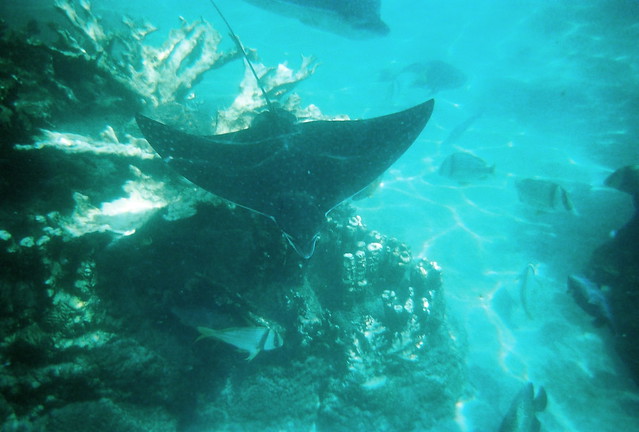Friday, October 12, 2012
Marine scientists charting the location of North Atlantic deep-sea coral reefs
A team of marine biologists and geologists have unveiled the first-ever set of maps detailing where vulnerable deep-sea habitats including cold water coral reefs and sponge fields are likely to be found in the North East Atlantic.
The team from Plymouth University, the Marine Biological Association, and the British Geological Survey, have used complex modelling techniques to chart a surface area more than three times the size of the UK's terrestrial boundaries.
The first stage of the Mapping of the Deep project - led by the University, and financed by the BBC Wildlife Fund, and the Oak Foundation - has also enabled researchers to ascertain the proportion of our coral reefs and sponge beds that would be covered by the proposed network of Marine Protected Areas.
Dr Kerry Howell, project lead and member of the Plymouth University Marine Institute, said: "We have better maps of the surface of Mars than some parts of our deep-sea - but this marks the dawning of a new era in deep-sea mapping, and our first steps into understanding the deep-sea realm as never before."
The new study has used predictive modelling to locate where habitats are found, according to a complex range of factors such as water temperature, depth, and rock formation.
Cold-water coral reefs, like their shallow water relatives, provide a source of food and shelter to many species - but unlike them, do not require light in order to grow. The UK has extensive cold-water coral reefs in its waters, and all but one are found in the deep-sea, below 200m in depth.
Deep-sea sponge fields are similarly important in the role they play in the ecosystem. They live on soft, sandy or muddy sediments at a depth of around 1,300m, in total darkness, extreme cold and under crushing pressures. Individual sponges are about the size of a tennis ball, but they live at such densities that they form a unique habitat.
Rebecca Ross, a researcher at Plymouth University who produced the maps, said "Although the mathematical process is complicated, the principle of the technique is quite straightforward: we know the conditions that we find a reef under, so we can use mathematical models to find other places that have the right combinations of conditions for reefs to grow.
"The use of predictive modelling is an important step forward in deep-sea exploration because the deep-sea is so vast and so expensive to visit that we cannot possibly hope to survey it all."
The next step of the project will use state-of-the-art acoustic mapping, coupled with predictive modelling, to produce much more detailed maps with much less margin for error.
The maps also show that if all of the current proposed Marine Protected Areas are put in place, 30% of the UK's coral reefs will be protected - but just 3% of the sponge fields. It is, says Dr Howell, important evidence with which to present to present to policy-makers. She said: "Many people think of the deep-sea as the last great wilderness on earth, but we are increasingly relying on it for food from fishing, energy from oil and gas, and now we are even mining it for precious metals like gold, copper and zinc.
"We know the deep-sea ecosystem is extremely sensitive to disturbance from human activities, but at the moment we have a limited understanding of what habitats are down there, and where they are found. The maps produced by the Mapping the Deep project will make a real difference in helping us to sustainably manage our deep-sea."
The study is published in the scientific journal Diversity and Distributions.
Photo courtesy of foqus via Flickr (CC BY 2.0)
Labels:
News

